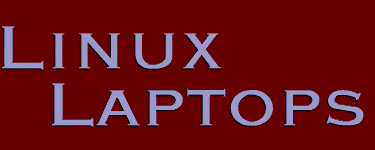| |
Glossary
If we've used a term in our other pages that you think should
be defined here, please let us know.
Driver:
A driver is the part of an
operating system kernel
that controls a particular device. Each device built into or plugged
into a computer needs its own driver. Some drivers are built in
to the kernel; others, called "kernel modules" may be loaded
any time, without restarting the computer. Drivers for PC-Card
devices, for example, are kernel modules.
Distribution:
A distribution is a collection of all the software
needed to operate a computer, including the
operating system and a selection of application programs.
Various organizations and companies
collect and package Free Software into
distributions, usually on one or a few CD-ROMs, often with a
printed manual in shrink-wrapped box. All compete to have the best
"distro", but since there is no agreement on what makes one the "best",
each satisfies someone, and everyone has a favorite. As each
distribution adopts the best features of the others, all improve.
Examples of Linux distributions include
- Debian GNU/Linux(which we use), supported by the Debian Project,
- Red Hat Linux, maintained by Red Hat Software, Inc.,
- Yellow Dog Linux, maintained by Terra Soft Solutions, Inc.,
- The Linux Router Project, which fits on a few floppy disks.
There are many others.
Emulator:
An emulator is a program you run on your computer that allows
you to run other programs meant for a different computer or operating
system. There are free emulators for MS-DOS, for the 3Com Palm handhelds,
for old Apple ][, Commodore C64, and Timex ZX81s, and even for many video
game devices such as Atari and Nintendo game consoles. Commercial
products allow you to emulate the Macintosh, Windows 98, or Windows NT
if you must.
If a program running under an emulator crashes, it doesn't take down
your whole computer or any of the other programs you are running; you
just need to restart the emulator.
Enterprise Server:
An Enterprise Server is a computer system which performs
an essential service for a large organization. Examples include
corporate web servers, print servers, and data bases. A key feature
distinguishing an enterprise server is that even a short-term failure
costs more than purchasing and installing the system. For example,
it takes only a few minutes' down time at a nationwide stock exchange
to justify the expense of entirely replacing the system with something
more reliable.
Free Software
Not to be confused with "shareware" or "freeware", Free
Software is software which meets the definition in (e.g.) the
Debian Free Software Guidelines. It is called "free" not
because it is available at no charge on the internet -- though it
usually is -- but rather because it is offered without restrictions
on what you can do with it. In particular, the
source code is available, so you can modify it
(or hire someone else to modify it) and you have the right
to distribute your modified version without paying royalties to the
author.
Free Software has produced a revolution in software development
practices because anyone can participate in improving it.
Many thousands of people do. Although some participants are
hobbyists or students, many others use the software at work and are
paid to help improve it.
Free Software as we know it today is an outgrowth of the Free Software
Foundation's "GNU Project", started in 1984.
Kernel:
A kernel is a part of an operating
system, and is the program that physically controls all the
hardware devices in your computer and arranges to share them among
all the programs you run. Such devices include the processor
(or processors), memory, various disk drives, display screen,
keyboard, mouse, network interface, modem, sound synthesizer,
and anything else you may have plugged in.
Operating System:
An operating system (OS) is a matched set of programs (including
the kernel) that enable other programs to run on
your computer. Modern operating systems often include a "window
system" to organize graphical images and controls on your screen.
An OS includes other programs such as "daemons", which monitor the
system for interesting events and respond to them, and "utilities"
which you can use to control what the OS does.
Source Code:
Source Code is the text that programmers type in and edit
in order to produce programs you can run. To change a program, a
programmer changes the source-code text and then generates a new version
of the program from it. Without the source code one generally cannot
modify or fix a program beyond narrow bounds foreseen by its original
author.
The source code for non-free software is usually kept secret, or
otherwise restricted by copyright. This means that the only people
who can fix a non-free program are its owner's overworked employees.
The source code for Free Software is always
available, so anyone with programming skills can fix or improve a
free program. One normally sends the improvements back to the author
to be added to the next release, so free programs continually improve
according to the real needs of their users.
|
|

